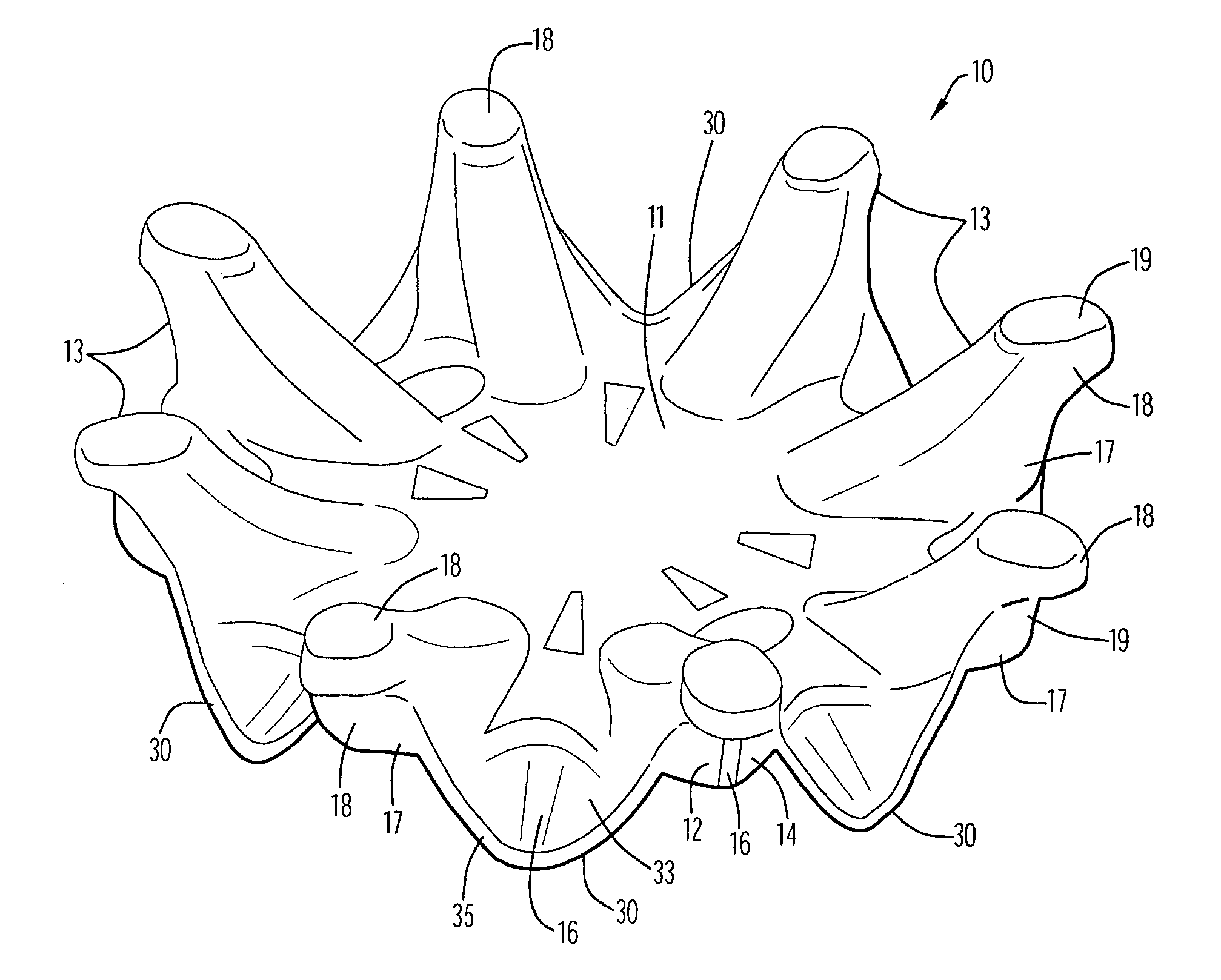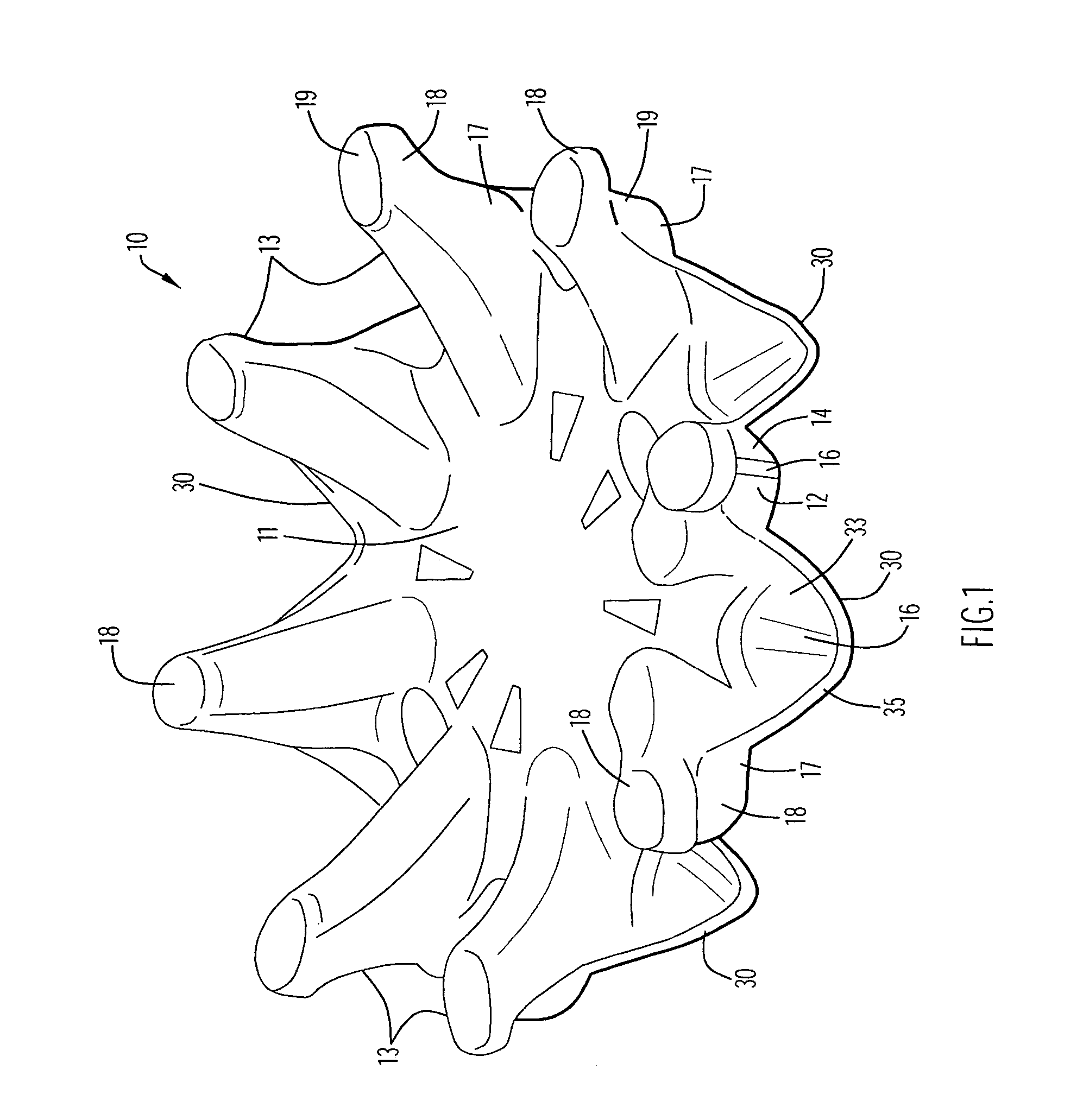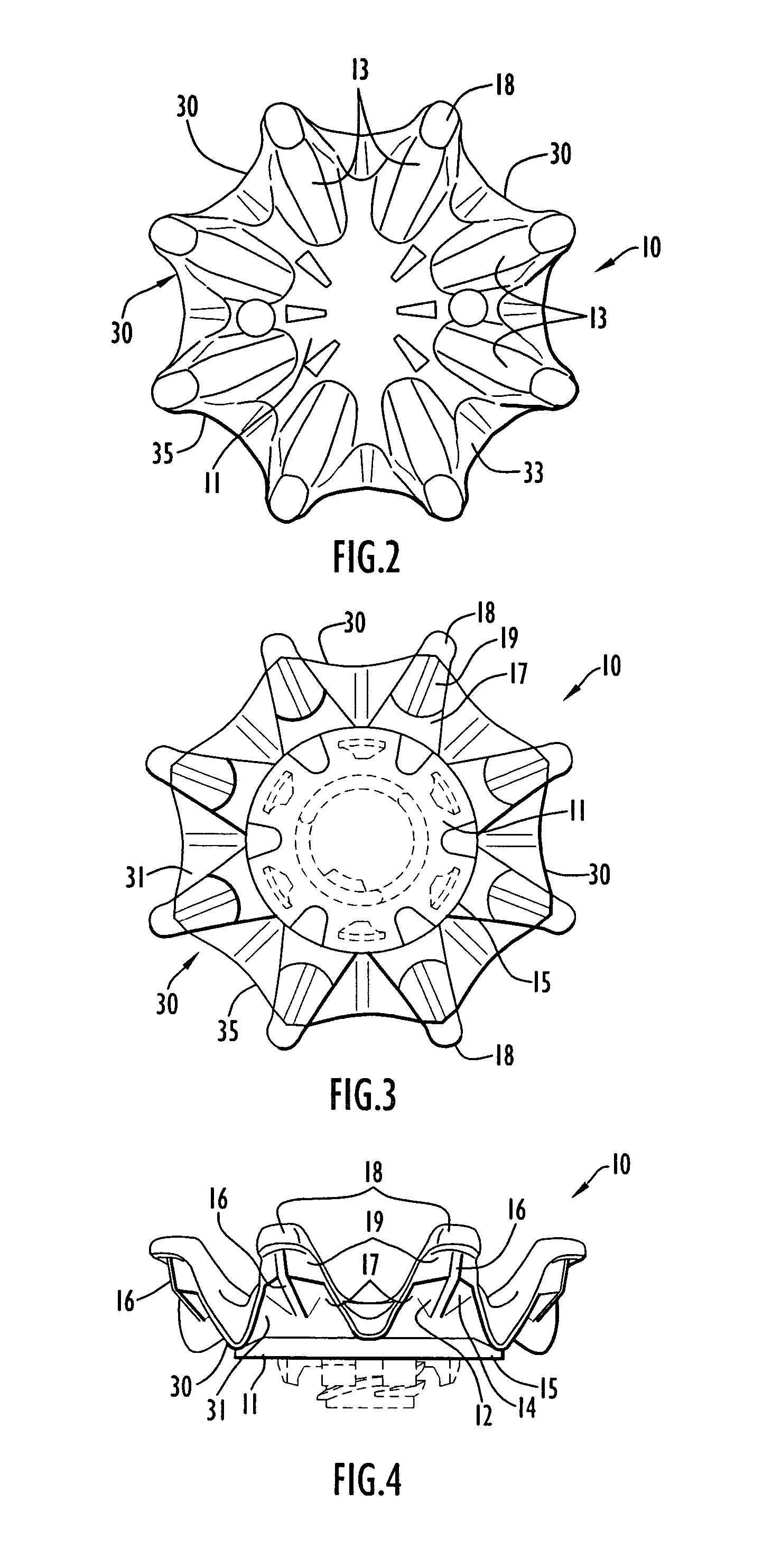Shoe cleat
a technology for shoes and cleats, applied in the field of shoes, can solve the problems of limiting the deflection range, the 860 patent has a tendency to be clogged with grass blades and/or mud in the region, and the cleat is disclosed, so as to reduce the clogging of the structure and improve the traction efficiency
- Summary
- Abstract
- Description
- Claims
- Application Information
AI Technical Summary
Benefits of technology
Problems solved by technology
Method used
Image
Examples
Embodiment Construction
[0022]In accordance with the present invention, traction is provided for athletic activities on turf surfaces by providing an athletic shoe having cleats, each of which has a hub with a plurality of traction elements extending outwardly and downwardly from the hub with resiliently flexible webs extending between and connecting adjacent traction elements. The cleat also preferably includes an attachment member, male or female, such as a threaded stud or shaft or socket or other attachment device which may be integral with, or removable from, the central hub, for attaching the cleat to a corresponding mating attachment member, such as a threaded or other engagement socket or shaft secured in the sole of an athletic shoe. Each traction element is strengthened against tearing by the connecting webs, and the webs are positioned and configured to prevent clogging of the cleat with grass and / or mud in the region between the traction elements and the cleat hub.
[0023]Referring to FIGS. 1–5, ...
PUM
 Login to View More
Login to View More Abstract
Description
Claims
Application Information
 Login to View More
Login to View More - R&D
- Intellectual Property
- Life Sciences
- Materials
- Tech Scout
- Unparalleled Data Quality
- Higher Quality Content
- 60% Fewer Hallucinations
Browse by: Latest US Patents, China's latest patents, Technical Efficacy Thesaurus, Application Domain, Technology Topic, Popular Technical Reports.
© 2025 PatSnap. All rights reserved.Legal|Privacy policy|Modern Slavery Act Transparency Statement|Sitemap|About US| Contact US: help@patsnap.com



